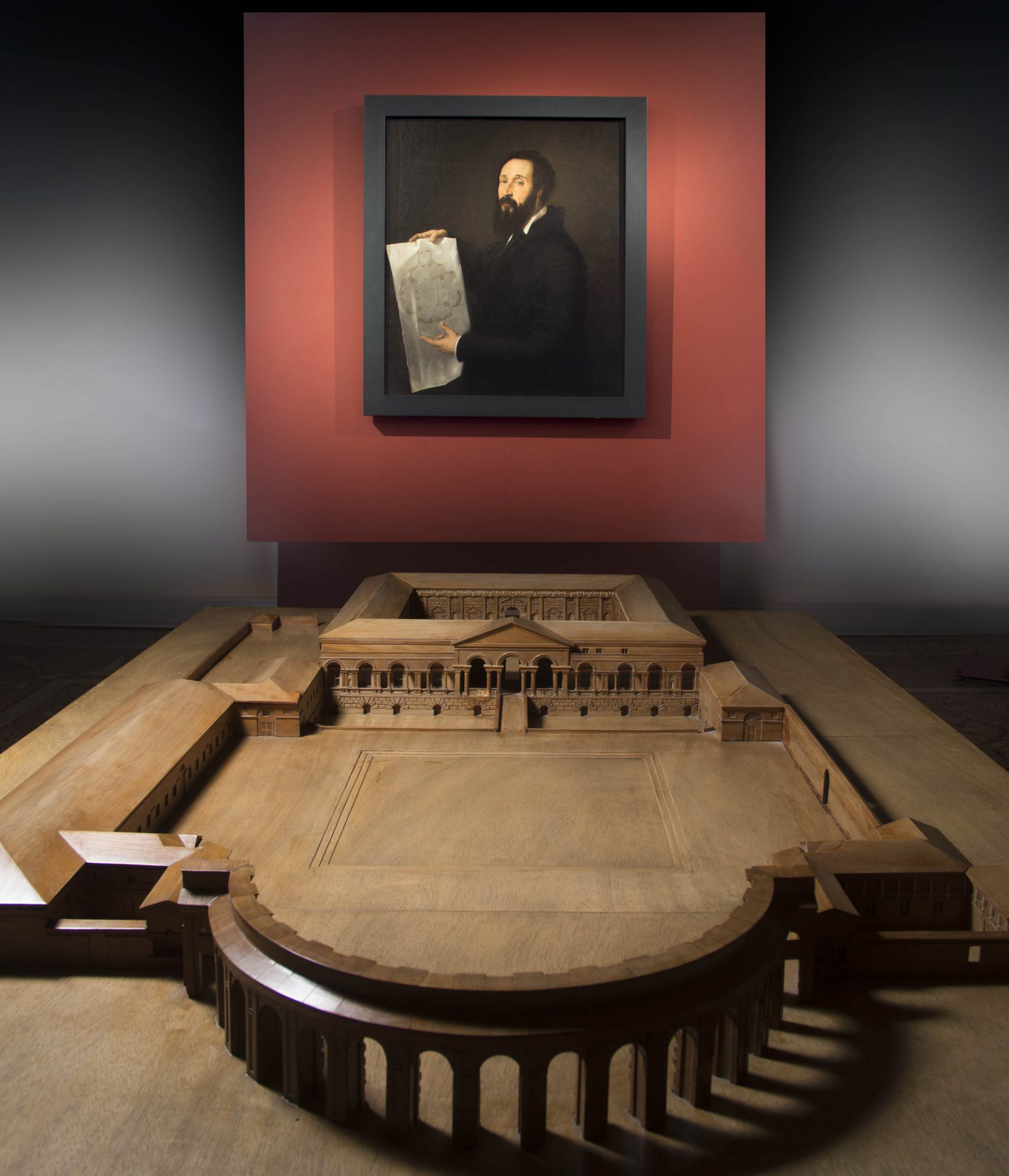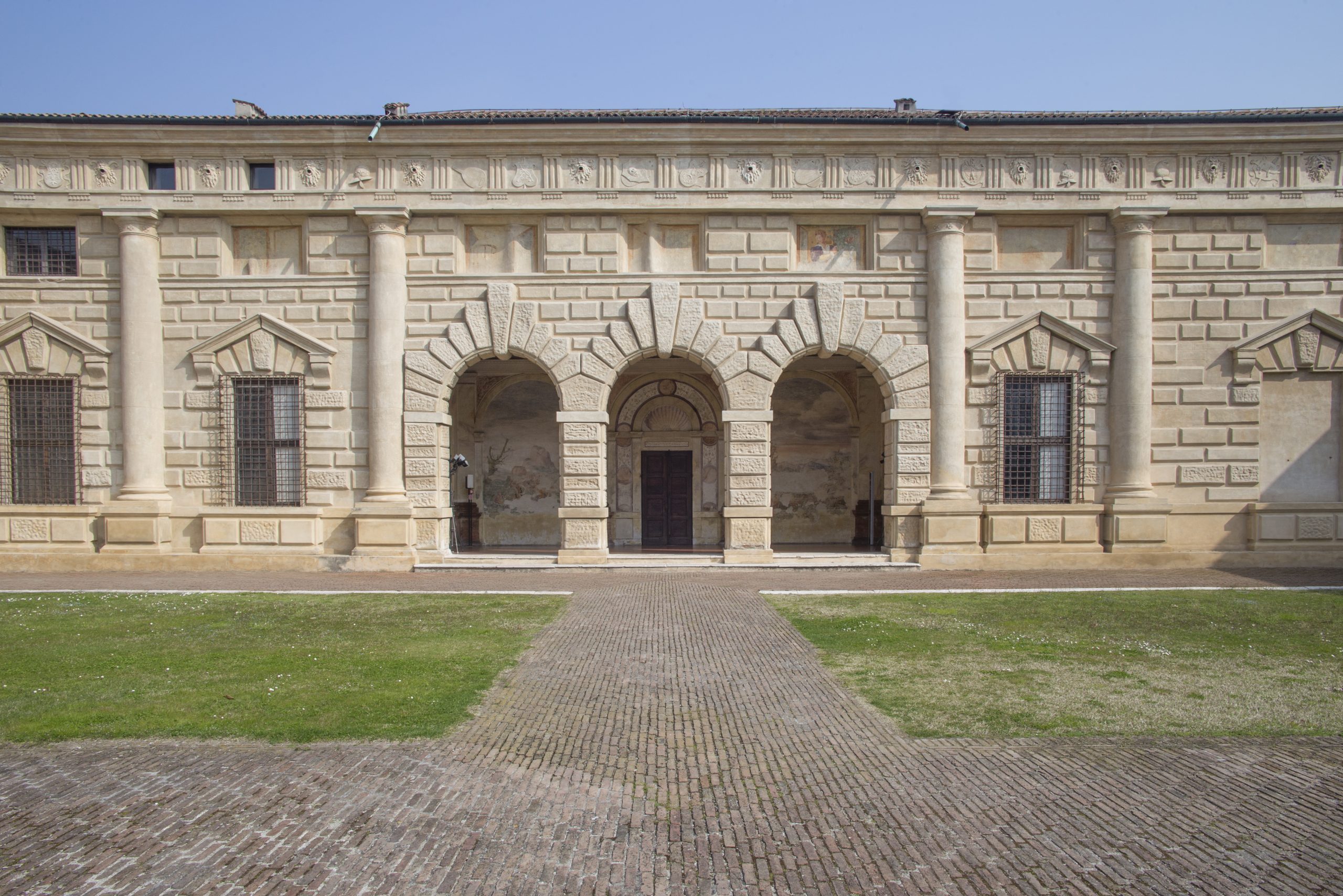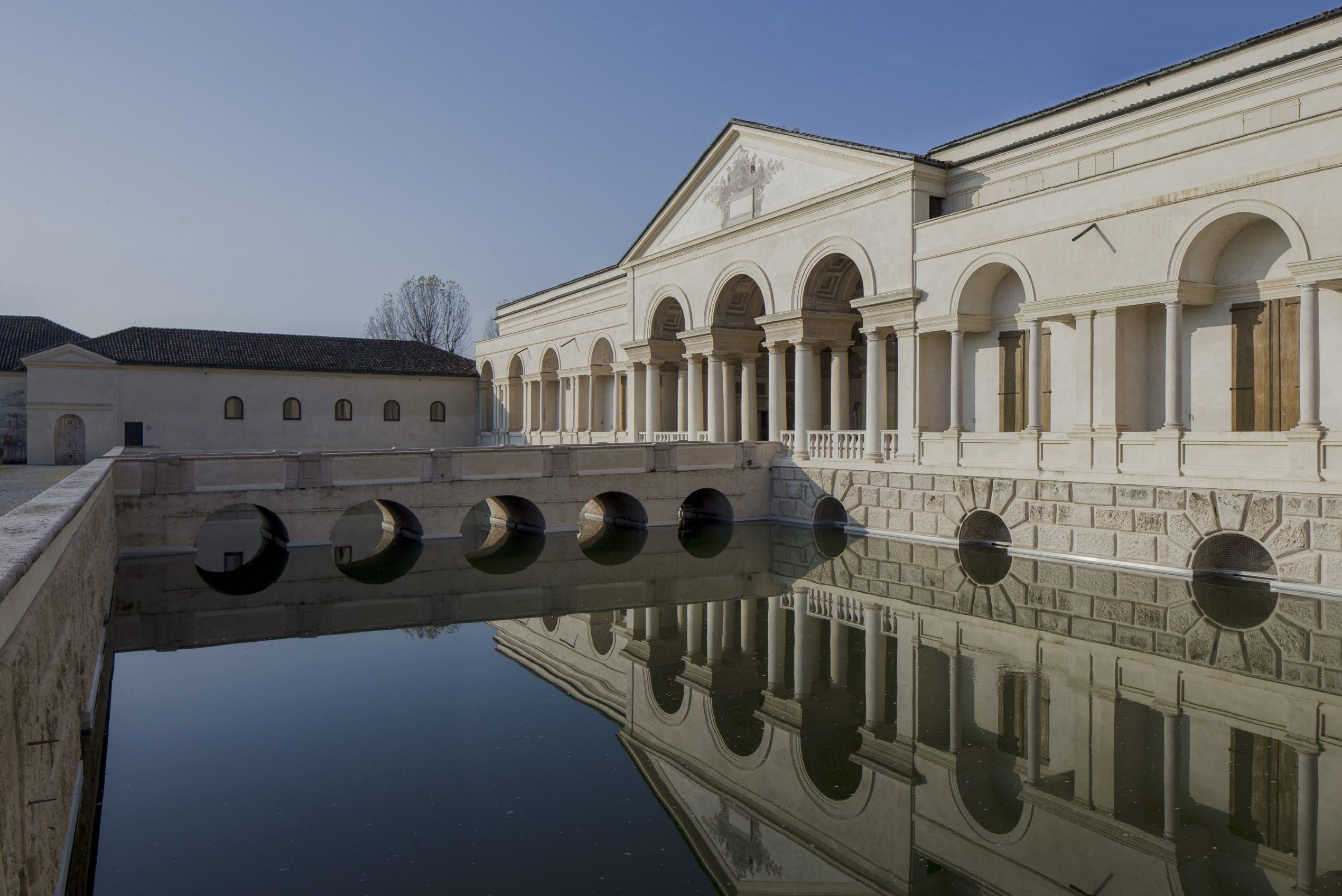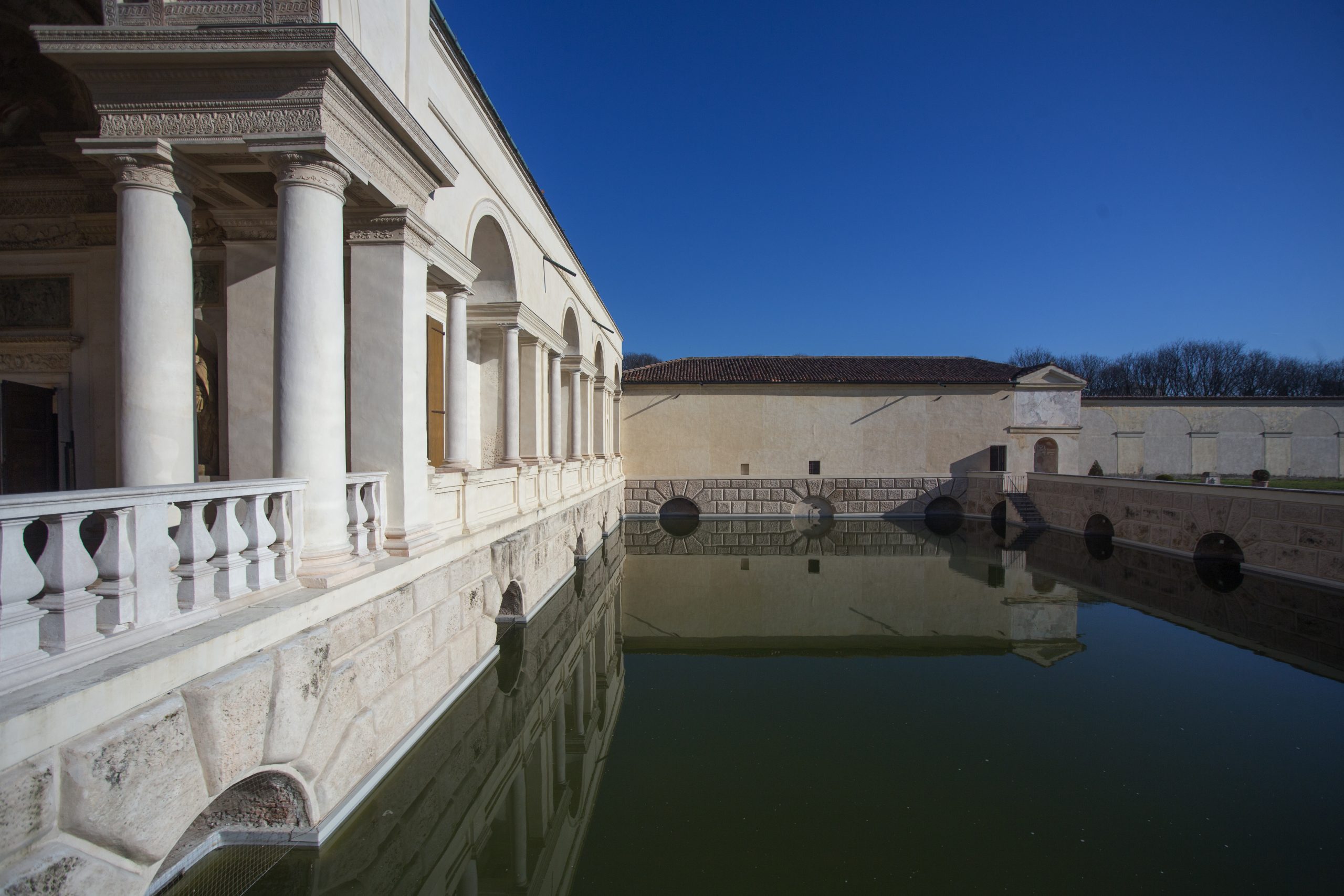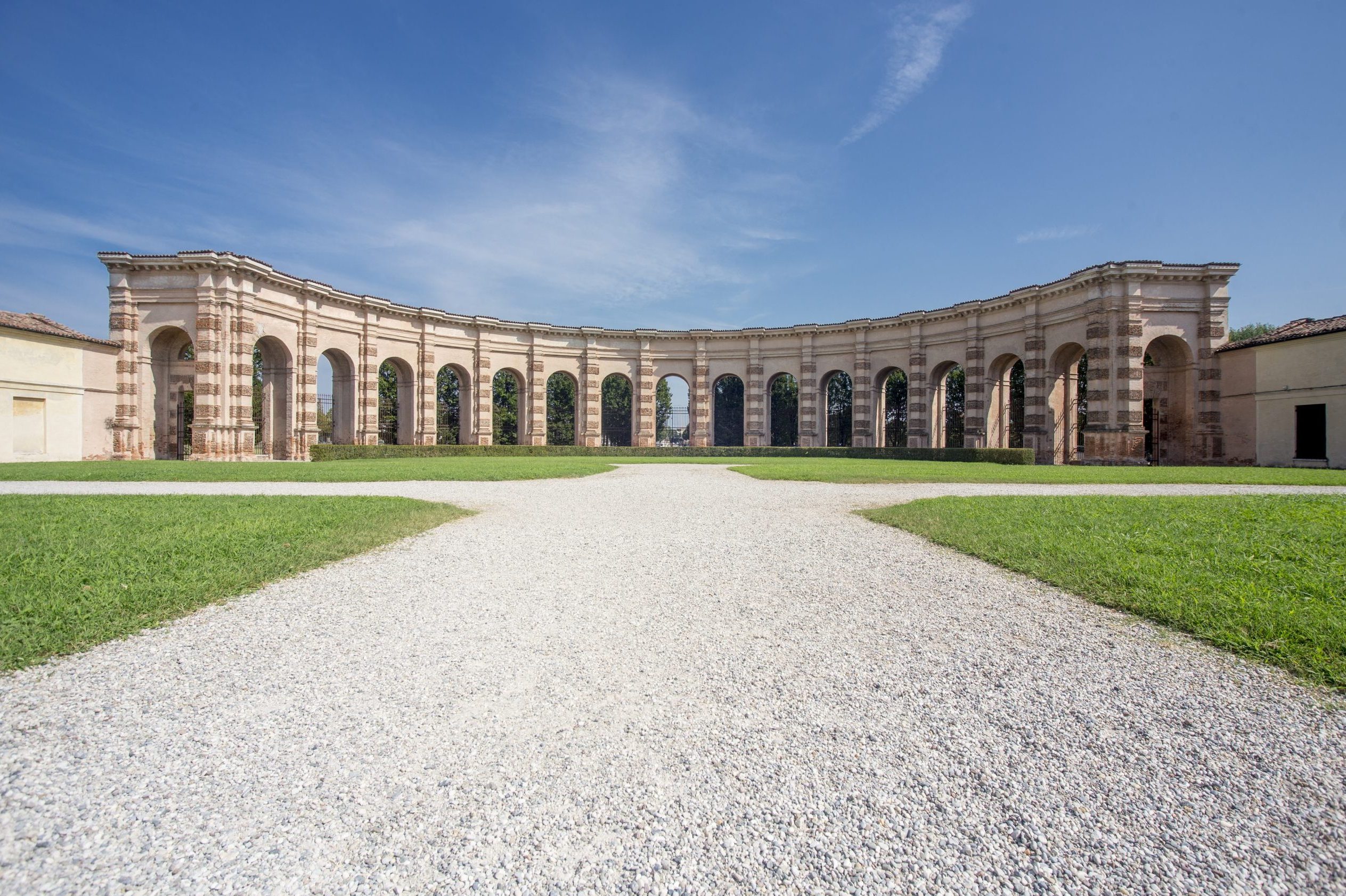Introduction
Palazzo Te is one of the most extraordinary examples of a Mannerist Renaissance Villa, designed and constructed by Giulio Romano (1499 – 1546) between 1525 and 1535 – known as ‘The abode of the Gods’. Built for Federico II Gonzaga (1500 – 1540), features include open walkways looking over vast gardens and green spaces to emulate Roman Villas. The lake surrounding it has since been rained to make way for civic buildings and residential homes. The architectural structure and external façade of the building is characterized by ashlar stone-masonry work punctuated with large, Doric columns.
The Palazzo is set around a large square court-yard, enclosed on all four sides with smooth ashlar walls and Doric semi-columns, supporting a classical entablature featuring metopes and triglyphs.
Giulio Romano conceived of everything, from the architectural structure of the building, to the splendid cycles of decorative frescoes, the fireplaces, the ceilings, the floors of every room; overseeing every minute detail of execution undertaken by a series of his most trusted collaborators. Though traces of frescoes remain on the exterior, it is the interior frescoes that give visitors a glimpse of some of the most remarkable examples of refined stuccos.
The Place and the Name
Mantua was once surrounded by four lakes formed by the river Mincio. Not far from the island on which the city was built was another island, in Medieval times called Teieto (then abbreviated to Te).
This was connected to the south walls of the city by a bridge. There are two likely theories regarding the meaning of the word Teieto: it may derive from tiglieto, linden tree wood, or tegia, from the Latin attegia, meaning hut.
The island, which would have been verdant and quiet, soon became a place of leisure for the Gonzaga family. Numerous documents inform us that it was already in use by the mid fifteenth century.
At the beginning of 1500 Francesco II Gonzaga, husband of Isabella d’Este, had a house and stables for his thoroughbred horses built here. Traces remain of a prestigious building with painted walls in the area below the roof of the present Palazzo. One of the frescoes is dated 1502.
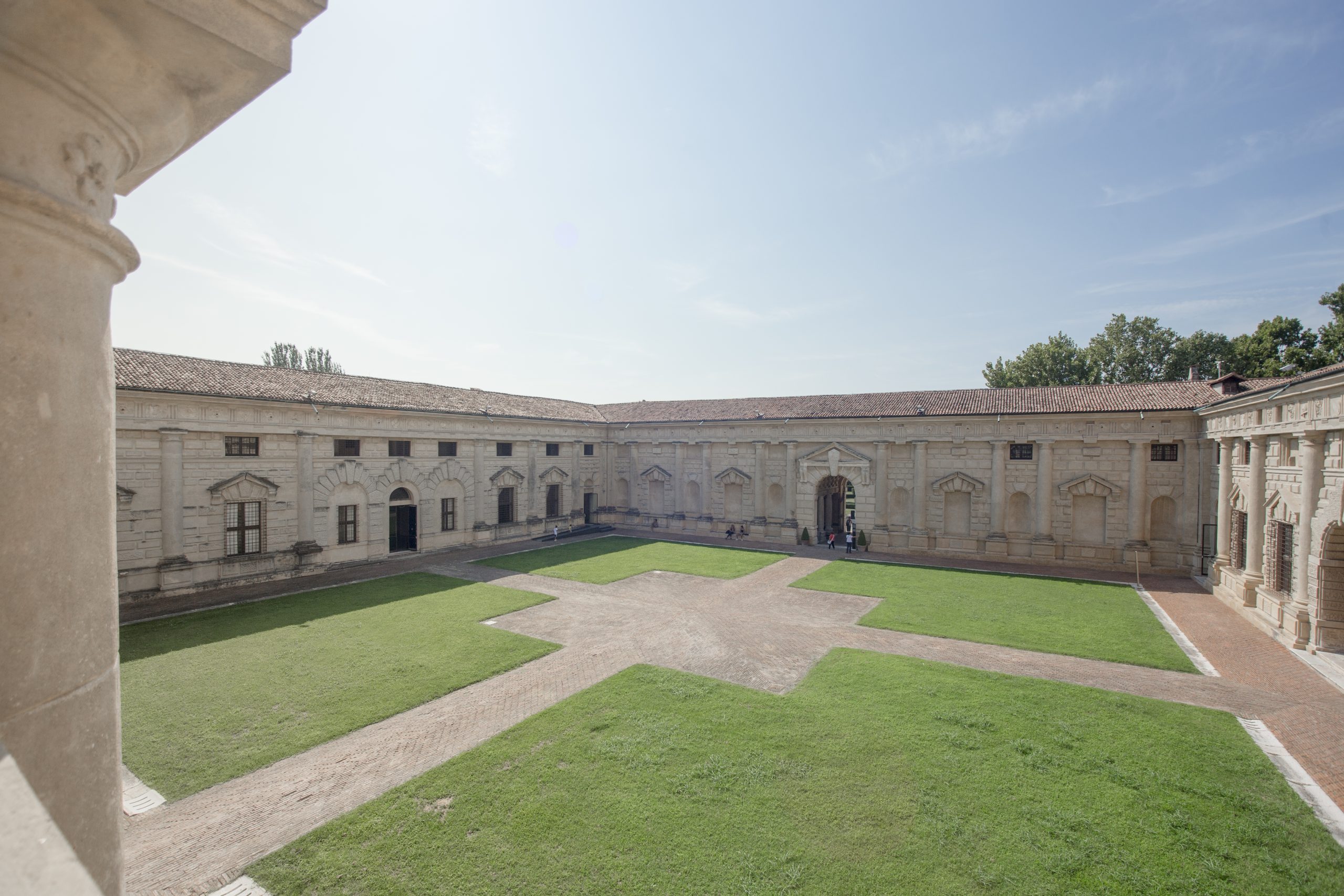
The purpose of the building
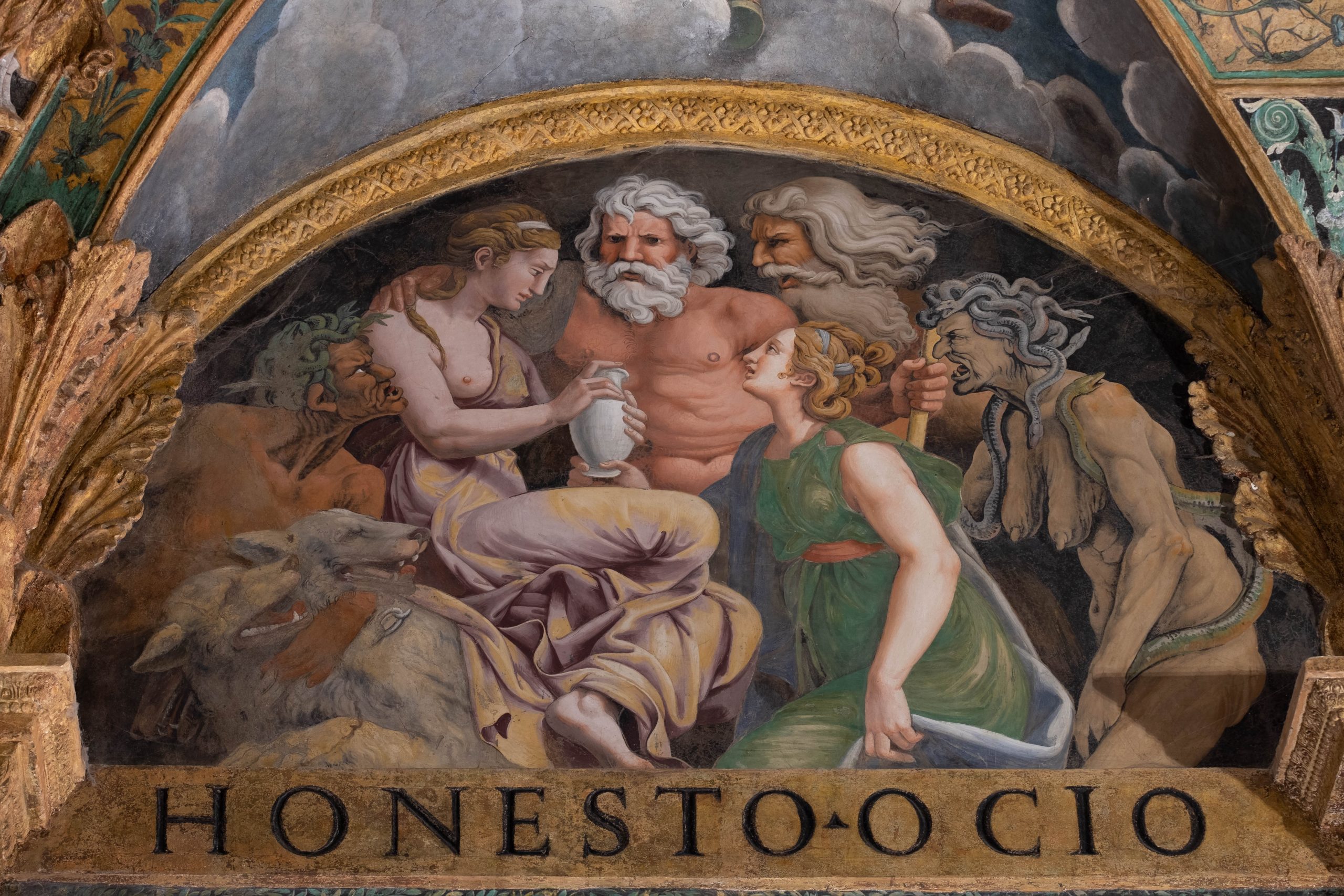
The meeting between Giulio Romano and Federico II Gonzaga, and ensuing commission to build Palazzo Te is evocatively described by Vasari in his Lives of the Artists.
When Giulio came to Mantua in October 1524, the marquis provided him with a house, showered him with gifts and, after giving him one of his favourite horses, rode with him to the Te island. Here Federico charged Giulio to renovate the existing stables to “build a small residence to which he could retire sometimes to feast, or dine for pleasure”. Although the original intention seems to have been fairly modest, Vasari tells us that when the marquis saw Guilio’s beautiful model, he immediately ordered him to start construction of the palazzo.
The purpose of the building is also clearly expressed in an inscription in the chamber of Psyche: this is a Palazzo for free time and enjoyment, for the honest leisure of the prince, whose energy is restored amid the peace and calm. Palazzo Te was often used by the Gonzaga family to receive and honour important guests, as is the case of the visit by emperor Charles V, who stayed at the Te on two occasions, in 1530 and 1532. Henri III, king of France, was received here in 1574.
The architectural evolution
Before the construction of the Te Palace, “Tejeto” island was home to the Gonzaga’s stables. The latter have been incorporated into the Villa.
The squared court is clearly inspired by old villas’ shape and the nobles’ countryside residencies. In fact, Giulio Roman had a constant source of inspiration throughout his works, which is the ancient Roman and Greek architecture and art.
The palace was built and decorated over 10 years (1525 – 1535) and its original structure has been partially modified throughout the centuries. In fact, between the late 16th century and the first half of 17th century, new structures have been added: the Grotto, the Esedra Garden and the Fruttiere. Moreover, in the second half of the 18th century, the architect Paolo Pozzo took restoration works and did renovations of the roofs, pavements and the frescos.
Despite the renovations, the architecture and the decorative trim of every room are the embodiment of the passage from Renaissance beauty to Mannerism, of which Giulio Romano remains the main protagonist and genius.
Giulio Romano: The Artist
Giulio di Piero Pippi de’Iannuzzi, called Romano, was born in Rome during the last decade of the fifteenth century. Although his precise date of birth is uncertain, a death certificate of 1546 puts his age at 47, meaning he was born in around 1499. Vasari dates his birth to 1492, while experts tend to accept the details on the death certificate.
Giulio works as a painter and is already learning architectural skills while still in Rome. His arrival in Mantua is preceded by a model of a new building in Marmirolo that is so splendid as to seem the work of Michelangelo. Although his creative genius is fired by Raphael, Giulio also looks to Michelangelo, whom he greatly resembles in the power and dynamism of his painted figures at Palazzo Te.
As soon as he arrives in the Mantua of the Gonzaga, in 1524, he immediately becomes a key figure, firstly as a superb artist and skilful coordinator of the Gonzaga’s projects then, from 1526, as Prefect of the Works. Giulio is active on many fronts, in the Gonzaga principality and in other States.
Besides his work at Palazzo Te and the Ducal Palace, he carries out various town planning projects and supervises private construction. He also makes a significant contribution to religious architecture and creates designs for Mantua cathedral and the Basilica of San Benedetto al Polirone. Such is his standing at the Gonzaga court that, in 1526, he is made Court deputy.
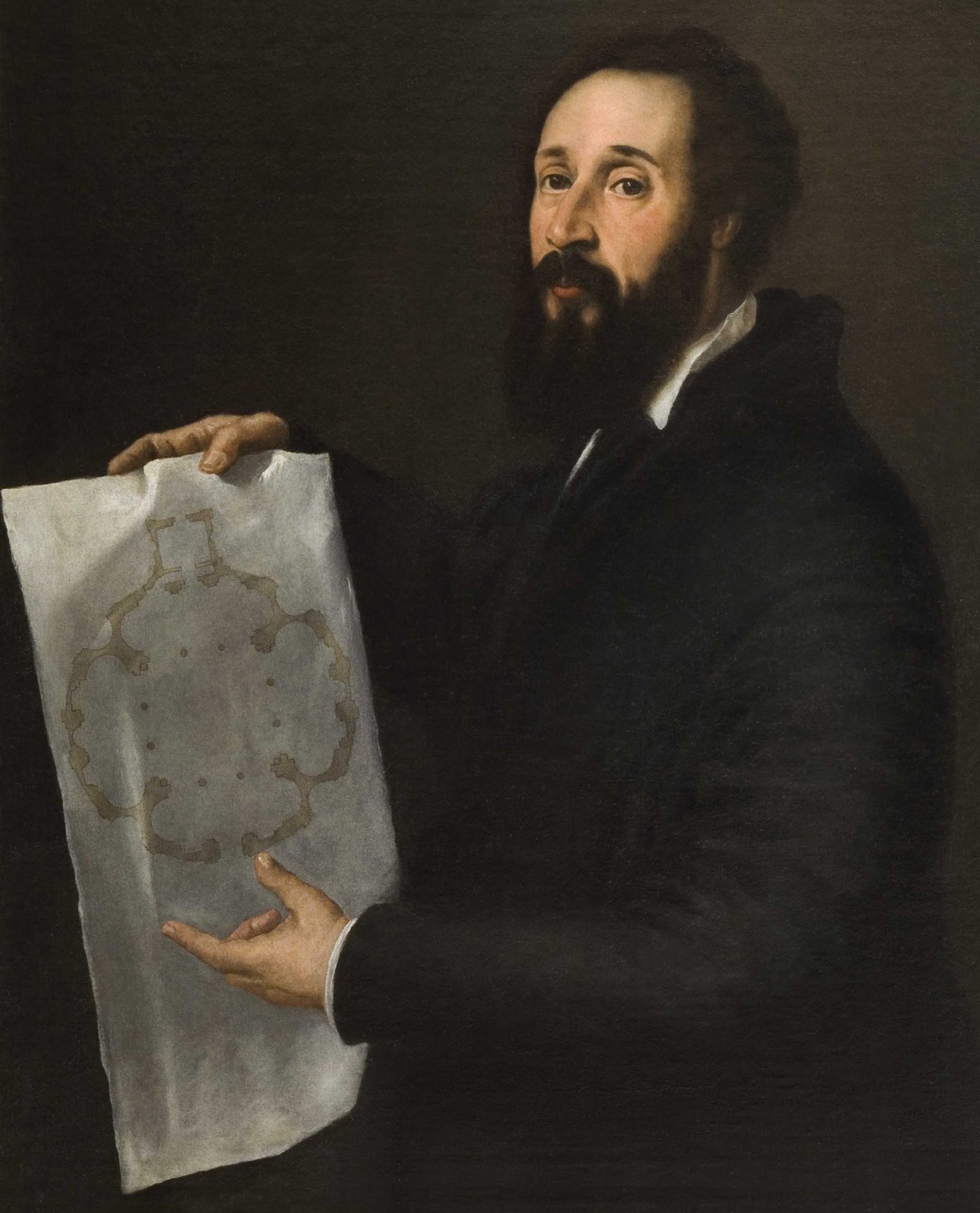
Federico II Gonzaga: The Patron
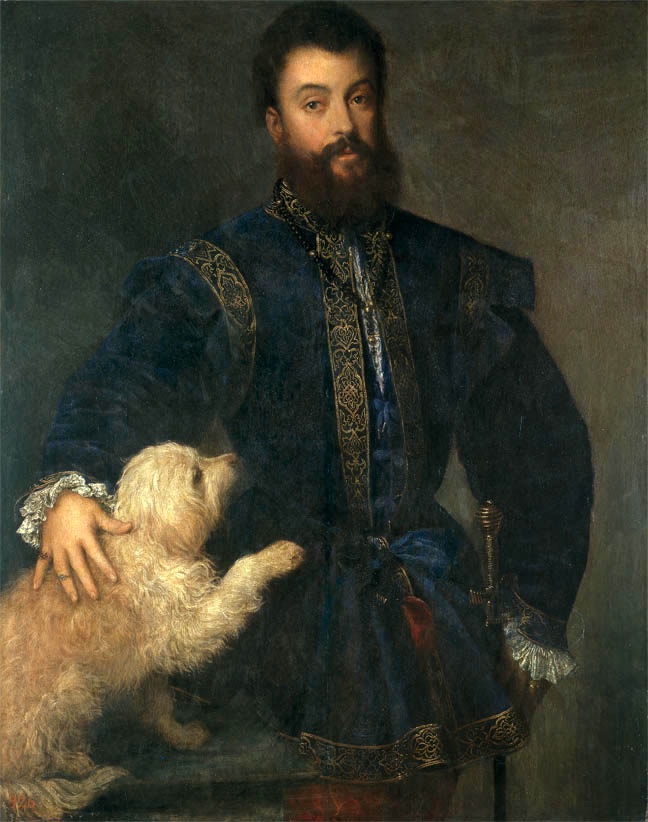
The patron of the Palazzo is Federico II Gonzaga (1500-1540), son of Francesco II and Isabella d’Este.
Federico ruled Mantua as marquis between 1519 and 1530; in the same year he was made a duke by emperor Charles V. Judged by Guicciardini not to be a great military leader, he soon gave up the life of a soldier to devote himself to governing his small state and to his own personal interests, among which the arts in particular and the collection of classical art. In doing so, he followed in the family footsteps; his mother was a highly cultivated patron and collector of the arts and his father an attentive patron (who built Palazzo di San Sebastiano, not far from the Te island, where he hung the famous Triumphs by Mantegna).
In 1524, with the help of Baldassarre Castiglione, the Gonzaga’s ambassador to Rome, Federico succeeded in bringing Giulio Romano, Raphael’s best pupil, to Mantua. Federico Il Gonzaga confided his dream to Giulio: to celebrate life at the Mantuan court through the genius of an artist who designed “not dwellings for men but houses for the Gods” as Vasari states in his Lives of the Artists.
The Chamber of Titian
Titian was communicating with Federico Gonzaga between 1522 and 1540, and from 1536 his relationship with the Mantuan court intensified. Giulio Romano, with whom he had become friendly, is portrayed in a three quarters profile holding up the ground plan of an ancient building, or the project for an unidentified religious building with a central plan. The painting is refined and restrained: the black clothes, finely delineated in grey, are barely distinguishable from the dark background that is lightened slightly towards the outlines of the figure by thin layers of green earth. The light focuses on the sitter’s face and hands, which are thrown into sharp contrast with the white of the collar, cuffs and white sheet of paper. The work is historically documented in Giulio Romano’s house and later in the Gonzaga collections. Then, following the fate of many works sold by the Gonzaga to Charles I of England, it became part of the royal collection and was exhibited in Whitehall. Later sold privately, it was auctioned for the first time in 1946, after which it changed hands on various occasions, remaning for over a decade in the collection of Philippine dictator, Ferdinand Marcos. It came up for sale again in 1996 when it finally became public property thanks to the Province of Mantua and Lombardia Region, who purchased it for Palazzo Te. It is interesting to compare the painted portrait with the one given by Vasari in his Lives: “Giulio was neither tall nor short, more stocky then slight, dark-skinned, handsome, with lively dark eyes, extremely likeable, always polite, a small eater, simple dresser and honourable in his way of life”.
